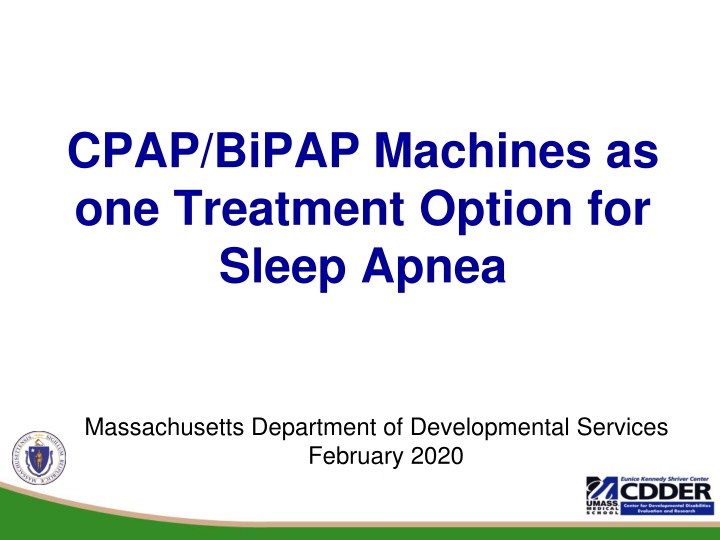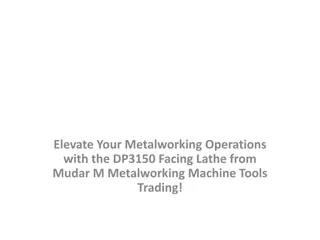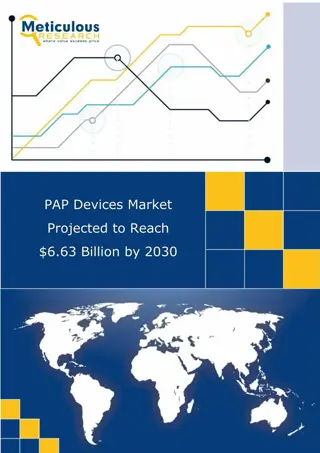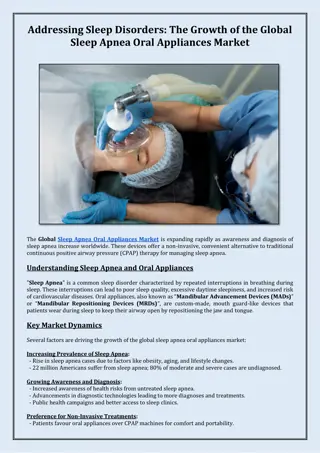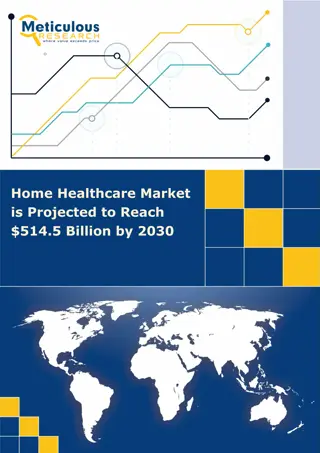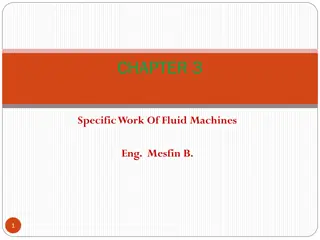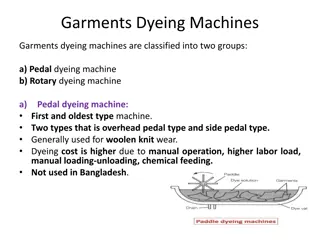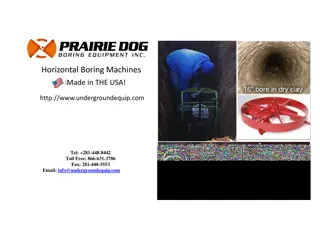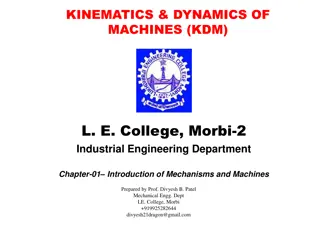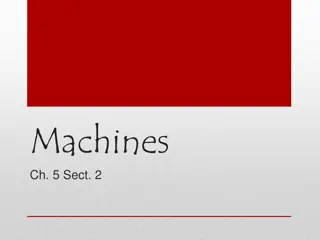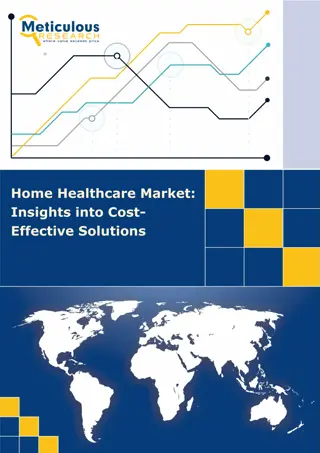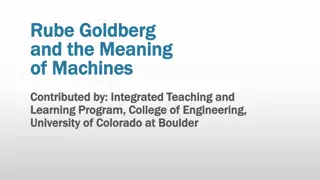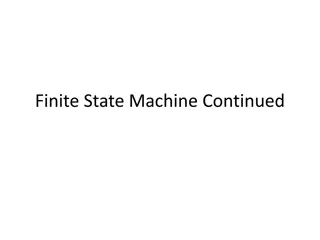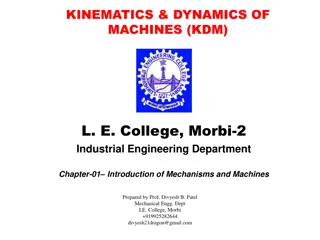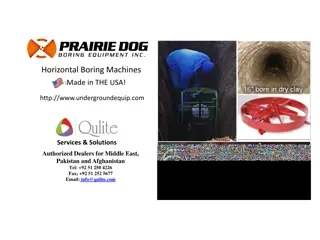CPAP/BiPAP Machines as
Sleep apnea is a serious condition that affects many adults, especially those with developmental disorders. This content provides an overview of using CPAP and BiPAP machines as treatment options, along with information on associated medical conditions, risks, and benefits. Learn about the types of sleep apnea, how the machines work, cleaning protocols, compliance assistance, and troubleshooting tips. Speaker Holly Saurman, a respiratory therapy director, shares insights and valuable expertise in managing sleep apnea effectively.
Download Presentation

Please find below an Image/Link to download the presentation.
The content on the website is provided AS IS for your information and personal use only. It may not be sold, licensed, or shared on other websites without obtaining consent from the author.If you encounter any issues during the download, it is possible that the publisher has removed the file from their server.
You are allowed to download the files provided on this website for personal or commercial use, subject to the condition that they are used lawfully. All files are the property of their respective owners.
The content on the website is provided AS IS for your information and personal use only. It may not be sold, licensed, or shared on other websites without obtaining consent from the author.
E N D
Presentation Transcript
CPAP/BiPAP Machines as one Treatment Option for Sleep Apnea Massachusetts Department of Developmental Services February 2020
Agenda Brief Overview of Sleep Apnea Explain CPAP and BiPAP machines What they are and how they work Images of different models Brief Overview of DDS Protocols Video demonstration of how to clean machines How to assist with compliance and usage Troubleshooting Resources
Sleep Apnea is a serious condition Affects 8% of adults in DDS services (NCI survey 2017) More common in William s syndrome, Prader Willie syndrome and Down syndrome: 50% of people with Down syndrome More likely as adults progress through dementia. Rates of sleep disorders range from 44% to 83% of people with Autism Spectrum Disorder
Medical conditions Increased risk of abnormal heart rhythms (arrhythmias) Greater risk of coronary artery disease, heart attack, heart failure and stroke High blood pressure Impaired glucose tolerance and insulin resistance Frequent nighttime urination Depression Menstrual irregularities Some research has found a connection between obstructive sleep apnea and glaucoma
Associated conditions Reduced attention Poor impulse control Difficulties with daytime functioning Poor mood and behavior regulation Impaired memory
Sleep Apnea is a serious condition People may not realize they have sleep apnea Treating sleep apnea can dramatically improve a person s quality of life
Speaker Holly Saurman, the Director of Respiratory Therapy (RT) at Tewksbury Hospital 35 years of experience working as a RT in the Commonwealth
What is Sleep Apnea?
Sleep Apnea Two types of sleep apnea Obstructive Sleep Apnea (OSA) Most common Central Sleep Apnea (CSA) Involves neurological components
Sleep Apnea Airway is narrowed or partially blocked during sleep. The brain signals the body to increase efforts to breath which briefly awakens the brain so that the airway can stiffen and open the throat. Efforts to breathe then decrease again and the brain goes back to sleep. Hundreds of times a night!
Sleep Interruptions People with sleep apnea may not get enough oxygen during sleep and probably don t sleep soundly. As a result, likely see excessive daytime sleepiness, irritability, poor concentration, etc.
Other Possible Signs: Abrupt awakenings accompanied by gasping or choking Frequent night wakening Nighttime sweating Loud snoring Waking with a dry mouth or sore throat Morning headaches Poor concentration or forgetfulness Mood changes, depression
How is sleep apnea diagnosed? Health Care Provider orders a sleep study Commonly performed at home Or in a hospital sleep lab if: Already using a PAP device Already using oxygen PAP treatment is not effective Diagnosed with sleep apnea (based on results) CPAP or BiPAP ordered (if applicable) Many modules are Automatic and will self-adjust pressure based on person s needs.
What do they do? Continuous Positive Airway Pressure (CPAP) machine delivers a predetermined level of pressure which helps to keep the airway open under continuous pressure. Bi-Level Positive Airway Pressure (BiPAP) machine delivers two levels of pressure, one when the person breathes in and one when they breathe out.
Examples of PAP Devices AirSense by ReSmed DreamStation by Respironics System One by Respironics
Face masks Nasal Pillow Nasal Mask Full-Face Mask
Tubing, Filters and Chamber Heated Tubing Humidifier Chamber Standard Tubing Filters
Important Consideration A person who is unable to remove a mask on their own should NEVER use a full face mask There is a risk of aspiration from vomiting during the night
Placeholder for possible video showing how to use the machine If being used with Oxygen--Always turn on CPAP machine before turning on O2 concentrator. Turn off O2 concentrator before turning off CPAP machine. Do not tip the machine
If CPAP is used with oxygen Always turn on the CPAP machine before turning on the oxygen concentrator. This will reduce the risk of spark!
Never tip the machine! Do not tip the machine if the humidifier chamber has water in it! Try two-sided Velcro tape to secure the machine to the bedside table Avoid clutter!
Cleaning and Replacement of Parts Each manufacturer has its own recommendation for cleaning and replacement schedules. Replacement is primarily driven by insurance Standard time frames: 30-60 days; 60-90 days Review with the home care company Develop a schedule
Staff Training Staff need training on the individual s equipment: mask, nasal pillow, machine. A Respiratory Therapist or a trainer from the home care company should do the initial training, including: How to assemble and disassemble the machine How to maintain the machine How to clean parts How to operate comfort modes
Comfort Measures Ramp (pressure), moisture (humidity, and temperature. Pressure is specific to prescription written at diagnoses. Ramp will start the pressure at a lower rate for a specific period of time, then it will increase to the prescribed pressure. Not all people need ramp. It s a personal preference!
Usage is Monitored Once home care company sets up the device, they re going to monitor usage over a period of time. Compliance is defined as at least 4 hours a night of use. Home care company will outline specific requirements If non compliant, unit may be removed
How to help the person be compliant Don t be hard on yourself; set a goal! Start small with 2 hours a day for a week Increase to 4 -6 hours Often person feels MUCH BETTER and will want to continue
Compliance Some people may resist the sensation of the mask, touch, pressure, or noise Let the person handle the mask, turn it on and off, etc. Provide encouragement and support Documentation is critical
Troubleshooting and Questions
Symptoms that may indicate the machine is not working well Still have daytime sleepiness Constant runny nose or cold symptoms Still snoring Call the Primary Care Provider!
Common Problems Machine is not plugged in Won t turn on Other error codes Hose or Mask Leak
Hose/Mask Leaks Usually hose leaks are from a split Mask leaks are usually due to a poor fit Watch for (visible or person complaining): Dry, itchy eyes Red marks on bridge of nose Red marks on top of lip (below nose) Person will complain they don t have enough pressure
Questions Questions about the machine can be directed to the company Report error codes immediately Leave a message and a RT will return the call Homecare companies will have staff on 24/7.
All models need cleaning! Follow manufacturer s instructions Do: Use distilled water only Use moisturizer-free soap Remove tub first and then fill with water Do Not: Tip the machine Run through dishwasher Move the machine with water in it! Consider securing the machine to bedside table
Suggested Daily Routine 1. Remove mask/nasal pillows from individual. 2. Turn of oxygen 3. Turn off machine and let it cool down. 4. Remove water tub carefully so it does not tip and leave lid open to dry. 5. Drain water tub and clean water tub according to manufacturer s instructions. 6. Remove the face mask/nasal pillows and clean according to manufacturer s instructions.
Suggested Weekly Routines 1. Remove the face mask from the headgear (straps). 2. Clean the mask and head gear according to manufacturer s instructions 3. Clean the face mask, water tub, headgear (straps), and CPAP hose according to manufacturer s instructions. Make sure they are completely dry before reassembling. 4. When reinserting pillows or cushions into headgear inspect visually and correct if any gaps are seen. 5. Remove the filter from the machine. Clean or replace it according to manufacturer s instructions. 6. Use an anti-bacterial wipe on the exterior of the unit
Unique considerations Manufacturer cleaning protocol may not take into consideration exposure to bodily fluids. In those instances, cleaning would happen immediately.
List of what must be included A copy of the Health Care Provider (HCP) order Reason for use How to operate equipment including detailed responsibilities during various parts of the process: Bedtime Morning Weekly and biweekly cleanings How to clean and maintain equipment according to manufacturer s instructions When and how to order new parts from the medical supply company How use is documented
Cleaning Schedules Specific to manufacturer and company
List of what must be included cont. Plan for assuring compliance and, if necessary, desensitization to equipment Frequency of monitoring and observation during use Clear instruction on what to report to supervisor and HCP (Health Care Provider)
Sample protocols are available: All of the DDS CPAP/BiPAP guidelines and protocols can be accessed here: https://www.mass.gov/lists/health-and- safety-guidelines#cpap/bipap-use- CPAP SP Device Cleaning BiPAP SP Device Cleaning Blank CPAP Supply Replacement Schedule Guidance on Management of Diagnosis of Sleep Apnea Sample Individualized Health Care Protocol for Management of Sleep Apnea Supportive Protective Device
American Sleep Association: https://www.sleepassociation.org/sleep-disorders/sleep- apnea/ All of the DDS CPAP/BiPAP guidelines and sample protocols can be accessed here: https://www.mass.gov/lists/health-and-safety- guidelines#cpap/bipap-use- Other quality management webinars: https://shriver.umassmed.edu/programs/cdder/dds- webinars
QINA Brief QINA Brief DDS/CDDER QINA Brief on Sleep Apnea: https://shriver.umas smed.edu/sites/defa ult/files/QINA%20sl eep%20apnea_final. pdf
Research Resources Malow, BA, MD, et al (2006). Impact of Treating Sleep Apnea in a Child With ASD. Pediatric Neurology, 34(4), 325-328. Doran SM, Harvey MT, et al (2006). Sleep and dev. dis.: assessment, treatment and outcome measures. Ment Retard, 44(13), 13-27. Esbensen, AJ. Sleep problems in adults with Down syndrome (2016). JIDR, 60(1), 68-79. Current Developmental Disorders Reports June 2014, Volume 1, Issue 2, pp 74 85| Cite as Sleep in Individuals with an Intellectual or Developmental Disability: Recent Research Reports
Thank you! Produced by the Center for Developmental Disabilities Evaluation and Research, in conjunction with the Massachusetts Department of Developmental Services https://shriver.umassmed.edu/programs/cdder https://www.mass.gov/orgs/department-of- developmental-services 32
